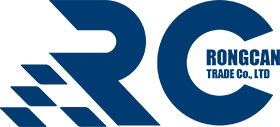Hello, welcome to the Chongqing Rongcan Trade Co., Ltd. website!
16
2023
-
11
Belt Drive: The Mechanical Essence of Smooth Power Transmission
Author:
Belt drive, as a common mechanical transmission method, transmits power from one shaft to another through a flexible belt. It has the advantages of smooth transmission, low noise, and low maintenance cost, and is widely used in various fields. This article will detail the principle, structure, and working characteristics of belt drives, and explore their applications in industry and daily life. We will also analyze the advantages and disadvantages of belt drives, and how to correctly select and maintain belt drive systems.
Belt drive, a common mechanical transmission method, transfers power from one shaft to another using a flexible belt. It offers advantages such as smooth transmission, low noise, and low maintenance costs, making it widely used in various fields. This article will detail the principles, structure, and operating characteristics of belt drives, and explore their applications in industry and daily life. We will also analyze the advantages and disadvantages of belt drives, and how to correctly select and maintain belt drive systems.
I. Introduction Belt drive, as one of the common transmission methods in mechanical engineering, plays an important role in many fields. It connects the driving shaft and the driven shaft through a flexible belt to achieve power transmission. Belt drives have many advantages, such as smooth transmission, low noise, and low maintenance costs, so they are widely used in many application scenarios.
II. Principles of Belt Drive The basic principle of belt drive is to transmit power from the driving shaft to the driven shaft through a tensioned belt. When the driving shaft rotates, the belt is subjected to tension, generating friction and transferring the rotational power to the driven shaft. The flexibility and elasticity of the belt make the transmission process smoother, reducing vibration and noise.
III. Structure of Belt Drive A belt drive mainly consists of a driving pulley, a driven pulley, and a belt. The driving pulley is driven by a motor or other power source, while the driven pulley is connected to the mechanical equipment or tools that need to transmit power. The belt is kept under a certain tension by a tensioning device and transmits power to the driven pulley through friction.
IV. Belt Materials and Types The performance and applicability of a belt drive are closely related to the chosen belt material and type. Common belt materials include rubber, polyurethane, and polyester. Different materials have different properties, such as tensile strength, wear resistance, and temperature resistance. Different types of belts, such as flat belts, V-belts, and synchronous belts, can be selected according to transmission requirements and working environment. Each type of belt has its specific advantages and application areas.
V. Operating Characteristics of Belt Drives Belt drives have many unique operating characteristics that make them a preferred transmission method in many applications. First, belt drives have smooth transmission characteristics. Due to the flexibility and elasticity of the belt, they can reduce impact and vibration during transmission, providing more stable power output. Second, belt drives are relatively quiet. Compared to other transmission methods such as gear transmission, they reduce noise and vibration, making the working environment more comfortable. In addition, belt drives also have the advantages of simple structure and easy installation, and low maintenance costs.
VI. Application Areas of Belt Drives Belt drives are widely used in many fields, including industrial production, transportation, agricultural machinery, and household appliances. In industrial production, belt drives are often used to transmit power to conveyors, fans, pumps, and compressors. In transportation, belt drives are used in car engine drives and motorcycle transmission systems. In agricultural machinery, belt drives are used in tractors, harvesters, and agricultural machinery transmission systems. In addition, household appliances such as washing machines and fans also use belt drives.
VII. Advantages and Disadvantages of Belt Drives Belt drives have many advantages, such as smooth transmission, low noise, low maintenance costs, and easy installation. However, belt drives also have some limitations. For example, due to belt bending and stretching, the transmission efficiency is slightly lower than that of gear transmission. In addition, the service life of the belt is affected by wear and aging, and it needs to be checked and replaced regularly.
VIII. Correct Selection and Maintenance of Belt Drive Systems To ensure the effective operation of the belt drive system, correct selection and maintenance are crucial. When selecting a belt drive system, factors such as transmission power, speed, transmission ratio, and environmental conditions need to be considered. In addition, regularly checking the belt tension, wear and tear, and tightness, and performing necessary maintenance and replacement, can extend the service life of the belt drive system and improve work efficiency.
IX. Conclusion Belt drive, as a common mechanical transmission method, plays an important role in industry and daily life. Its smooth transmission, low noise, and low maintenance costs make it a preferred choice in many application areas. By selecting appropriate belt materials and types, and performing correct installation and maintenance, the efficient operation and long-term stability of the belt drive system can be ensured. However, we should also be aware of some limitations of belt drives, such as slightly lower transmission efficiency and limited lifespan. Therefore, in specific applications, we need to consider various factors comprehensively to choose a transmission method that suits our needs.
With the continuous development of technology, the field of mechanical transmission is also constantly innovating and progressing. In the future, belt drive technology may be further optimized to improve transmission efficiency and service life, and to adapt to the needs of emerging industries and application areas. At the same time, the application of digital technology and intelligent systems will also bring more opportunities and challenges to belt drives. We look forward to the continuous development of belt drive technology under the impetus of engineering and technology, providing more reliable and efficient solutions for power transmission in various fields.
Specializing in motorcycle parts and drive belts
Chongqing Rongcan Trade Co., Ltd. has been engaged in motorcycle parts for over 30 years. Since 2018, it has been a distributor of GATES, and its business involves scooter CVT belts, motorcycle timing belts, ATV CVT belts, automotive belts, industrial belts, etc.
2022-03-22
Working principle of motorcycle gearbox
The principle of the transmission is that when the transmission pedal assembly is depressed, the transmission shaft rotates accordingly. The shift arm body S, which is welded to the transmission shaft, swings accordingly. The shift arm is connected to the shift arm body by a pin, and the shift arm is always pulled upward by a spring.
2023-11-16
What are the advantages of belt drives?
Belt drive is a common mechanical transmission method with the following advantages:
2023-11-16















